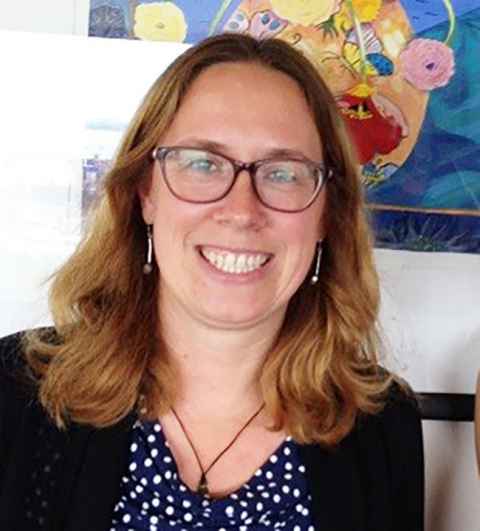Finding a place to call home: housing after prison
7 September 2023
No one should leave prison without stable housing if we want to reduce rates of recidivism, according to a major new report on housing after prison from the University of Auckland.

We’re failing prisoners, and society, by not providing adequate housing options on their release, according to a new report on housing after prison from Waipapa Taumata Rau, University of Auckland.
Department of Corrections’ figures suggest that less than half of those leaving prison are able to settle into long-term accommodation and within two years, around 60 percent of former prisoners will be re-sentenced and many will end up back in prison.
The report’s lead author, Associate Professor Alice Mills, a criminologist in the Faculty of Arts, says their research shows that those with unstable housing are 4.6 times more likely to be reimprisoned within the first year after release than those with stable housing.
“We can’t afford as a society not to do this. Recidivism has a high human and economic cost in Aotearoa, which is why everyone who enters prison, regardless of their status, should be given a detailed housing needs assessment which should be maintained and updated throughout their stay.”
Mills says that in line with the Aotearoa New Zealand Homelessness Action Plan, those with stable housing prior to their imprisonment should be supported to keep this wherever possible.
“Housing should be long-term and sustainable, in line with the plan, and it should also be good quality, safe, culturally appropriate and account for the needs not only of those who have left prison but also their whānau, especially tamariki/children.”
We can’t afford as a society not to do this. Recidivism has a high human and economic cost in Aotearoa.
She says stable housing is widely regarded as crucial in the reintegration process, as it allows people leaving prison to re-establish various aspects of their lives in the community, including looking for and keeping jobs, accessing health, welfare and treatment services and re-establishing whānau/family and other personal relationships.
Corrections and its governmental, iwi and community partners now provide more than 1200 housing places each year for prison leavers.
However, says Mills, this provision remains patchy and difficult to navigate, and relies on individualised approaches to housing that don’t prioritise whānau and whanaungatanga (building relationships).
Sample and key findings
The Marsden-funded study behind the report set out to explore the housing experiences of people leaving prison in New Zealand and to examine whether stable housing is associated with reduced recidivism.
It followed 201 people from six prisons through the period of release from prison and beyond. Participants were interviewed while they were in prison, just prior to their release, and approximately six and 12 months afterwards.
Interviews collected data on participants’ past and present housing situations, any housing support received and on several factors that predict stable housing, including mental health and substance use, employment and education and whānau/family support.
Mills says two measures of housing stability were used: ‘residential mobility’, with those who had moved more than once within a six-month period being classified as having high residential mobility, and ‘stable’ or ‘unstable’.
‘Stable’ included housing owned by participants or rented from the state, a private landlord or a non-governmental organisation/Housing First scheme. ‘Unstable’ included living with whānau or friends, in a motel, hostel, boarding house or campground, or being homeless on the street.
Seventeen percent identified as women and three-quarters as Māori. Most were short-term prisoners with just 14 percent serving over two years. Twenty-two percent had a current partner and just over three-quarters had children. Nearly 50 percent were in paid employment prior to prison.

Twenty-two percent didn’t know where they were going to live on release and expected to be homeless. Women were more likely than men to know where they were going to live and several women living in state housing prior to prison were able to keep their tenancy if imprisoned for only a short time.
Just 31 percent reported receiving any support to find housing prior to their release. No one who owned their housing prior to prison reported receiving any assistance to keep it.
Two-thirds of participants in the post-release group lived in unstable housing in the six months after prison, while 44 percent moved twice or more during this time.
Māori were 1.7 times more likely to live in unstable housing and 2.4 times more likely to have moved twice or more in the six months after release than non-Māori, suggesting, says Mills, that Māori would benefit from targeted, culturally appropriate services and support to help them find and keep stable housing after prison.
More than half found it very hard to find housing after release, with Māori being 2.4 times more likely to have found it difficult than non-Māori.
“This is likely to reflect the difficulties faced by Māori in wider society, including racism and discrimination in rental housing markets, and demonstrates the need for specialist housing support and provision for Māori leaving prison,” says Mills.
Māori should be enthusiastically supported in their practice of Tino Rangatiratanga and Mana Motuhake to develop their own housing provision and support.
More recommendations
Further recommendations include a call for a more diverse array of post-release housing, open to a wider group of people, including those on short prison sentences or remand, and available nationwide.
Critically, says Mills, any post-release housing should have a feeling of 'home’, rather than simply somewhere to live, about it; offering inhabitants privacy, permanency and control over their environment.
“This means long-term, affordable, safe, good quality housing in the right location where people can maintain and/or develop strong, positive, supportive relationships and social bonds,” she says.
She believes this is particularly important for Māori, for whom whānau is a crucial component of wellbeing, support, cultural knowledge, positive identity and flourishing.
“And for wāhine who have often experienced abuse within the home, post-release housing should be safe, secure and supported, and provide a place for them to rebuild their relationships with their children.”
Any form of support should be culturally appropriate, with services provided by Māori for Māori, she says.
“Māori should be enthusiastically supported in their practice of Tino Rangatiratanga and Mana Motuhake to develop their own housing provision and support.”
Going Straight Home? Post-prison housing experiences and the role of stable housing in reducing reoffending in Aotearoa New Zealand by Associate Professor Alice Mills, Anika Terry, Cinnamon Lindsay Latimer and Dr Barry Milne was produced by the School of Social Sciences and COMPASS Research Centre at Waipapa Taumata Rau, University of Auckland.
Media contact
Julianne Evans | Media adviser
M: 027 562 5868
E: julianne.evans@auckland.ac.nz